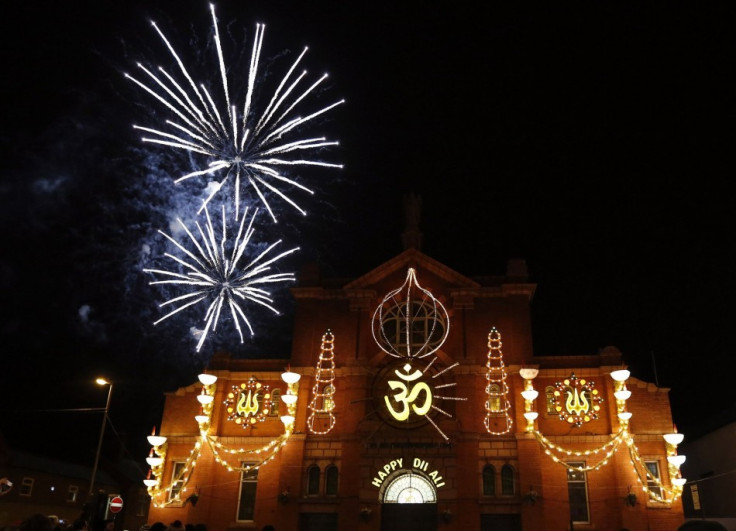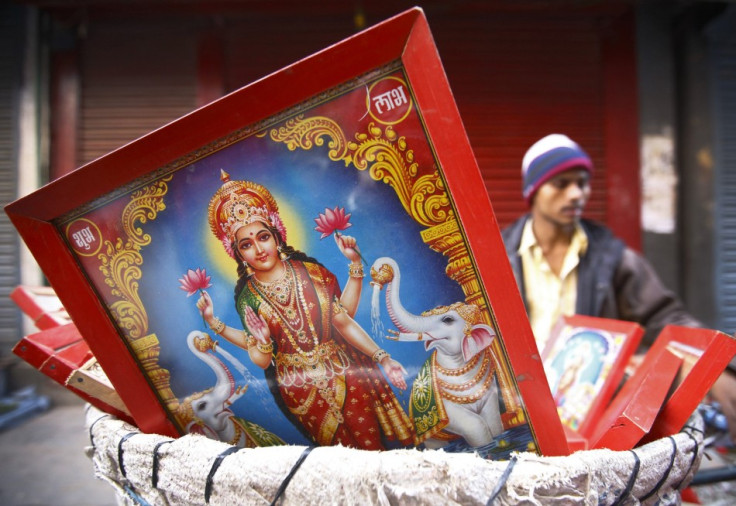Diwali 2014: Mythology, Traditions and How to Celebrate the Indian Festival of Lights

Diwali or Deepawali, the festival of lights is one of the biggest and brightest festivals in India and celebrated across the country as a symbol of victory of good over evil.
The date for Diwali is decided through the Hindu lunar calendar and this year it falls on 23 October. Usually, the festival falls somewhere around mid-October and mid-November.
According to popular beliefs, lighting lamps in every nook and corner of the house is a symbol of the victory of knowledge over ignorance and light over darkness.
The most awaited festival is celebrated for five days starting with Dhanteras and ending with Bhai Dooj, while literally illuminating the entire Indian sub-continent with the light of joy.
On the auspicious day, people distribute sweets and gifts to loved ones while many believe in giving away food and other necessary items to the poor as charity.
The celebration, however, is incomplete without bursting firecrackers in the evening when the sky dazzles with colourful fireworks.
While many are critical about the pollution created by the firecrackers, some others provide spiritual and 'scientific' reasons for the need for bursting them.
The sound created by firecrackers is regarded as the external manifestation of the joy and happiness that people feel within and want to convey to God, who is believed to hear the echoes from his heavenly abode.
However, some others say there is a 'scientific' reason for why firecrackers began to be used: the fumes and sounds produced by the crackers are said to kill hundreds of thousands of insects including mosquitoes bred after the monsoon.

Each of the five days of Diwali has a separate meaning and mythology associated with it, and there are separate traditions on how to celebrate it.
History and Mythology:
The mythology related to Diwali can be traced back to ancient India.
According to Hindu mythology, Lord Rama, along with his wife Sita and brother Lakshman were exiled from the Kingdom of Ayodhya as part of a vow made to king Dashratha.

After 14 years of exile in the dense forests and killing the mighty demon Ravana, Lord Rama returned to Ayodhya to become the king after his father's demise.
The people of Ayodhya welcomed their future king by lighting clay lamps in rows throughout their country and thus the celebration of good over evil and happiness over sadness began.
How to Celebrate:
The arrival of the festival of lights also signifies the growth in wealth as Hindus believe that on this day Mother Lakshmi, the goddess of wealth, enters their homes and brings good luck and prosperity.

To celebrate the day, people clean their homes and decorate them with colourful flowers and row of clay lamps shimmering inside and outside.
Hindu women prepare mouth watering delicacies including sweets and snacks. On the evening of Diwali, people wear new clothes and perform Lakshmi Puja (worship) and distribute sweets and greet each other.
Later in the evening firecrackers take central stage while those who want to stay away from the noise and pollution spend the night playing cards.
IBTimes UK wishes 'Happy Diwali' to everyone.
© Copyright IBTimes 2025. All rights reserved.






















